1. Introduction
With the development of the era of the commodity economy, the phenomenon of co-branding between Chinese commercial brands and art has gradually come into the public's view. Brands make use of cooperation with art to enrich the cultural connotation of the brand, which increases the added value of the brand to a certain extent, art is also no longer unfamiliar to everyone through the publicity of commercial brands, thus allowing art to obtain a more effective dissemination effect in the areas familiar to the public [1]. The co-branding of art and commercial brands has become the secret weapon of major brands. Linking different fields together in a special way to create a distinct sense of experience for consumers, this highly topical and communicative business strategy is becoming an important development direction in the global commercial brand marketing model [2]. However, it is not difficult to find that the phenomenon of co-branding between art and commercial brands in recent years has also presented several problems, for example, the cooperation has become a mere formality and lacks actual connotation, the artists have created some insufficiently valuable works of art to cater for business, and the choice of co-branding has not really been in line with the brand's image and the function of the goods themselves. Through a search on the China National Knowledge Infrastructure (CNKI), there are more than 4,000 articles on the topic of "co-branding", but only about 100 articles on the "commercialisation of art", and even fewer on the relationship between the two from an interdisciplinary point of view. Therefore, although there have been many studies on the co-branding and commercialisation of art, there is still a gap in research on the co-branding of art and commercial brands based on an interdisciplinary perspective, which makes it more meaningful to explore the relationship between the two from this perspective. This study adopts the literature research method, comparative induction method, and case study method to analyse the phenomenon of art and commercial brand co-branding based on three different dimensions: brand visual identity design, art commercialization, and aesthetic education. It is hoped that the characteristics and commonalities between the two can be better grasped and utilised to provide more informative ideas and inspiration for domestic commercial brands and art in the future development of society and to positively take on more social responsibility while creating a good artistic and commercial atmosphere.
2. State of the Art and Commercial Brand Co-Branding
As the consumer society continues to evolve, more and more brand and art co-branding phenomena are coming into the limelight. For example, the co-branding of Uniqlo and KAWS made Uniqlo's T-shirts sell out in a short period of time, the products co-branded by the luxury brand LV and Yayoi Kusama again after ten years became the favourite in the fashion world, VANS revitalises the brand through co-branding with artists. These examples give people a sense that modern consumers are gradually shifting their focus from the value of the product itself to the spiritual culture behind the brand and the art, furthermore, the public sees the potential of co-branding in the age of consumption. Under the influence of the phenomenon of co-branding, the value of brands has been further enhanced, and artists have also made the creative approach to artwork more extended through co-branding. Although co-branding has become commonplace in the domestic business and art worlds, the large number of co-branding phenomena has also revealed many issues that require attention from all sectors. Among them, the problems in the areas of brand visual image, art commercialization, and aesthetic education are exposed more rapidly and prominently and are of great value to be explored at the present time. This paper uses interdisciplinary and innovative thinking to analyse the problems in a more integrated and comprehensive way and make effective recommendations. Therefore, this paper analyses the current state of art and commercial brand co-branding from the following three interdisciplinary perspectives.
2.1. Brand Visual Image Design
The co-branded art object does not match the brand's image, and the final co-branding result does not enhance the brand's image and value. As shown in Figure 1, in 2020, the brand Ramen Said that it had co-branded with the British Museum to launch a series of products called "famous paintings that you can eat". The three main types of ramen in this series are Gauguin's Vase of Flowers tossed with spaghetti tomato-beef sauce, Monet's Waterlily Pond tossed with basil chicken and lotus seed, and Van Gogh's Sunflowers tossed with creamy mushroom bacon [3]. The product prints famous paintings directly on ramen packaging, which is clearly at odds with ramen's brand positioning which says it seeks happiness and its relatively Japanese-style brand image. Such a lack of brand image awareness of the co-branding did not appeal to consumers, in the end, the interesting-looking co-branded model ended hastily with low sales as only 3,281 people paid for it on the platform. Therefore, co-branding that is not in line with the brand image cannot strengthen the visual image of the brand and achieve the purpose of enhancing the added value of the brand but will weaken the consumers' memory and loyalty to the brand.
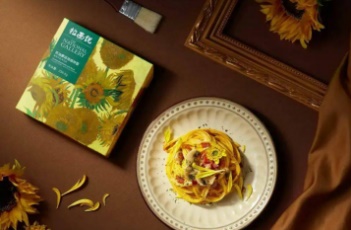
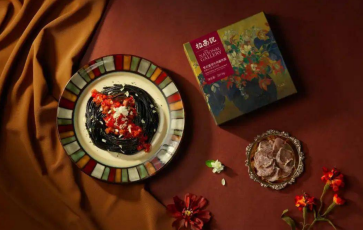
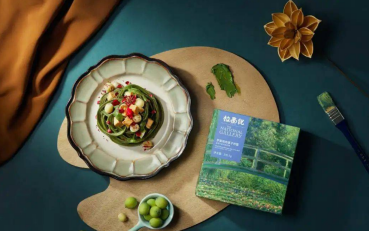
Figure 1: Ramen said and the British Museum co-branded product [4].
In addition, domestic commercial brands and art co-branding are presented singly, and there is a serious homogenisation of brand visual derivatives, leading to a lack of long-term effective cooperation potential. As shown in Figure 2, the brand Luckin Coffee has been co-branded with the art world many times in recent years, for example, co-branded with the Korean art IP "Line Puppy" and printed the artwork on coffee cups, which has been sought after by a large number of young consumers; co-branded with Han Meilin's Chinese Zodiac paintings, which were printed on takeaway bags, attracting a large number of consumers; and the brand Yongpu Coffee, which was co-branded with Van Gogh's art paintings. Co-branded with Van Gogh's art paintings printed on the packaging has attracted many art lovers to consume. While it is true that the visual sensation brought to consumers by the association of brands with art can satisfy people's consumer psychology for a short period, a large number of these associations are merely the use of artworks on the surfaces of cups, packages, and other common cultural and creative products. Such a co-branding presentation method shows a single, easy to let brand derived from the type of cultural and creative products homogenisation is serious. There are only 7 comments under the Van Gogh co-branding tweet in the official account of Yongpu Coffee on Little Red Book (a unique social e-commerce platform in China), and the response is obvious. Co-branding only promotes brand economics and awareness in the short term, but over time it diminishes the potential for long-term co-branding collaborations between brands and the arts [5].
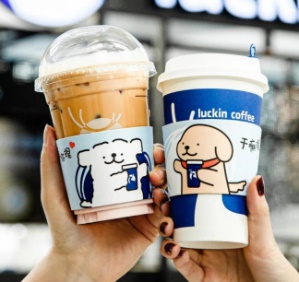
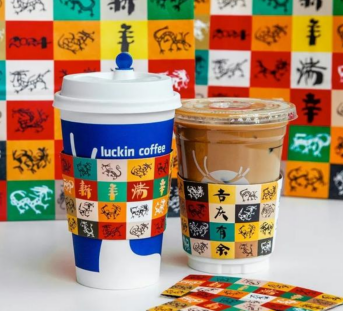
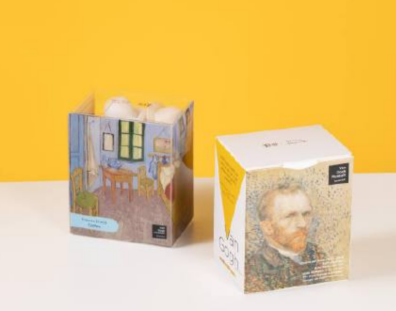
Figure 2: Homogenised style of branded art co-branding [6].
2.2. Art Commercialisation
Art and brand co-branding is actually a form of expression of art in the process of commercialisation, but in the process of co-branding a large number of artworks are copied and applied directly to commodities, which weakens the original aesthetics of the artwork and reduces the value of the artwork. The brand "Ramen Said", in association with the British Museum, printed the famous painting on the packaging, but the brand logo and the image did not blend well, resulting in the destruction of the artwork. The choice of material also has a direct impact on the presentation of the artwork. The co-branding between Depot and William Morris printed the artwork directly onto the plastic outer packaging of the tissue paper, and the plastic material resulted in the artwork being cheap in terms of visual perception. Artwork that caters to commercial purposes breaks down the aesthetics and taste of the artwork and undermines the aesthetic value of the artwork in society.
Secondly, over-commercialisation of art may trigger some artists to lose their original intention of creation to cater to the market trend, allowing some low-grade works to flow into the public eye. Admittedly, with the development of business, the phenomenon of industrialisation and mass production of artworks has become the norm, which has indeed brought huge profits for both artists and brands, and the famous Japanese artist Takashi Murakami has also openly stated that doing art is all about making money, but the social problems that flow from this phenomenon are still worthy of the public's consideration. Art is supposed to be the leader of aesthetic trends in society, and when over-commoditised it may become an accessory to follow business.
2.3. Art Commercialisation Aesthetic Education
Aesthetic education in the arts consists of three elements: education in cultural knowledge, education in artistic skills, and education in artistic behaviour [7]. Art business co-branding is in part about aesthetic education through cultural knowledge education or artistic behaviour. However, the strength of public education brought about by co-branding is limited, admittedly, through co-branding can be part of the commercial potential of the artworks delivered to the public's field of vision, but a large number of artworks with low commercial potential are still left in the art gallery unattended, the root of the art co-branding process lacks interest to provide the public with more exploration of the works of art, which leads to the guiding strength of aesthetic education is not strong enough, and therefore does not really achieve the purpose of art with educational significance for the public. The aim of art for the public is not really achieved. Van Gogh's Sunflower and Starry Night have become hot objects for co-branding in the branding world, and in recent years have been co-branded several times with well-known brand names such as VANS, FILA, and Poseidon. But in addition to Sunflower and Starry Night art master Van Gogh also has many works of great artistic value, such as The White Rose, as shown in Figure 3, this work of art is light and elegant, and Van Gogh is well known to the public works style is very different, as if revealing the other life of Van Gogh. However, such artworks rarely become the object of co-branding, and the public rarely has the opportunity to receive the aesthetic education of art through co-branding.
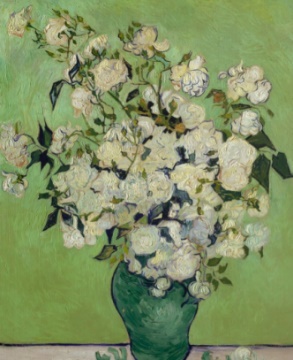
Figure 3: Van Gogh's The White Rose [8].
Aesthetic education is an important part of the education that constitutes the culture of the society, and the ultimate goal is to cultivate sound humanity and noble personality [9]. The proliferation of co-branded works of art has led to a superficial and one-sided understanding of art by a large part of society. Some so-called "literary youth" a piece of art behind the meaning a half-understanding, did not explore the depth of the meaning behind it, such an understanding of the way they lack an independent understanding of the work and thinking, and even easy to lead to misinterpret the work of art, such a status quo is not conducive to the development of the aesthetic education of the domestic society, and even more so, is not conducive to shaping people's sound and noble humanity and character. Such a situation is not conducive to the development of aesthetic education in the domestic society, and even less conducive to the shaping of people's sound and noble human nature and character.
3. Suggestions for Exploring Art and Brand Co-Branding
3.1. Deepening Brand Connotation and Tapping Cooperation Potential
Brand connotation is the core foundation for constructing a brand, and what customers buy is the connotation and meaning of the brand [10]. When choosing to co-brand with a work of art, brands should consider whether it fits with their brand image and ensure that the brand's cultural connotation can be deepened through this co-branding method. At the same time, different forms of co-branding should also be considered to increase the chances of brand exposure in public life, while allowing the expression of artwork to be extended, thus achieving a win-win situation and seeking the potential for long-term cooperation between the two parties.
Yayoi Kusama, a globally sought-after artist, has twice collaborated with Louis Vuitton, a top international luxury brand [11]. It's almost a win-win for Louis Vuitton. By co-branding with an artist of comparable stature, Louis Vuitton conveys the message that the brand is constantly seeking to enhance its artistic content and spiritual values, thus matching the consumer's purchasing mentality and making them willing to pay for the brand's deeper content and spiritual values. At the same time, Yayoi Kusama's artworks are not only presented on the products but also all Louis Vuitton shops are covered with polka dot art installations, which undoubtedly gives a new extension to the form and carrier of art creation. The two parties realised the potential and value of this collaboration, and in 2023, following on from 2012, the two parties co-branded again and generated a fashionable following, with good results for both the brand Louis Vuitton and the artists themselves, as shown in Figure 4. Therefore, from the brand point of view, the right choice of co-branding is to serve the enrichment of brand connotation, to keep the brand alive in the fierce competition in the market, and to produce emotional resonance with consumers, so that both parties can achieve win-win purposes through reasonable forms of co-branding, and to form an effective mechanism for long-term cross-border co-operation.
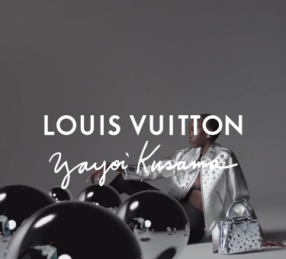
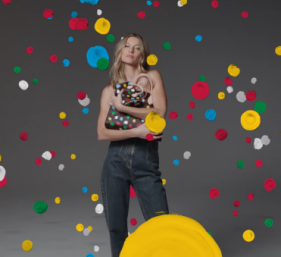
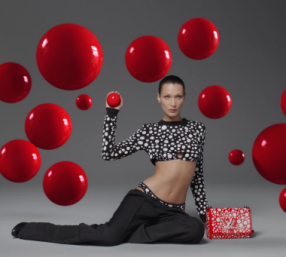
Figure 4: Louis Vuitton and Yayoi Kusama Co-Branding [12].
3.2. Highlight the Aesthetic Value and Return to the Essence of Art
Every successful work of art contains a unique aesthetic value, such a value is to a certain extent of the spiritual level, and cannot be directly equated with the economic benefits, so works of art should pay more attention to and highlight the aesthetic value. In addition, artists and brands are in the process of "co-branding", the need to actively weigh the relationship between art and economic interests, and to create more excellent works, to obtain more opportunities to create economic value. Digital artist Beeple's Everydays: The First 5000 Days, shown in Figure 5, sold for $69 million at Christie's, and in the process opened the eyes of most tradespeople to the value and potential of digital art and NFT, with some tradespeople laughing at the idea that the piece was a gimmick and not worth the price. But on the flip side, Beeple took 5,000 days to create this stunning piece. How is this not the same as a spiritual practice for artistic creation? Such aesthetically pleasing and innovative works that have been polished over a long period are naturally more valuable in the long run than those that are made in the blind pursuit of commercialism and are shoddily produced.
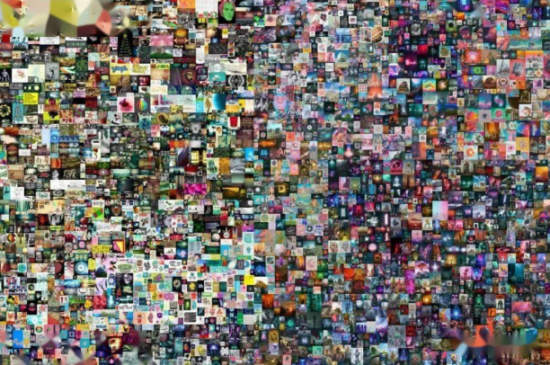
Figure 5: Everydays: The First 5000 Days [13].
3.3. Emphasis on the Purpose of Aesthetic Education and Co-operation in Creating an Aesthetic Environment
"Aesthetic education, on the one hand, develops man's feelings to reach the realm of perfection; on the other hand, it serves as a means of moral and intellectual education, which the educator must not fail to pay attention to [14]." It can be seen that Wang Guowei placed aesthetic education in a crucial position, emphasising to the public the purpose and importance of aesthetic education. Analysed from the perspective of aesthetic education, the strength of aesthetic education generated by co-branding is relatively limited at present. Therefore, brands and artists must take up social responsibility and actively explore new ways of co-operation, so that niche works with great artistic value can be presented to the public more often. K11 MUSEA, a world-class cultural and artistic landmark, continues to introduce museum-quality artifacts, art events, cultural experiences, and workshops that take customers on a journey of imagination. Many niche but very interesting artworks can often be found in this art mall. Moreover, it integrates art functions such as art galleries, theatres, and museums, so that arrivals can receive the baptism of art while consuming, and the purpose of art education for people is constantly strengthened through immersive art experiences in the mall.
Public space bears the responsibility of educating the public in this society [15]. It is a good thing to let the public know and be familiar with a large number of works of art in order to create a social aesthetic environment to achieve the purpose of education, but more and more people in the process of superficial and one-sided understanding of art is also continuously impacting on the aesthetic education. Therefore, to address this problem, brands, artists, and local authorities must cooperate and strengthen the creation of an aesthetic environment, and only through the active cooperation of the three parties can continue to strengthen the status of aesthetic education in society, thus giving society a comfortable, healthy and positive aesthetic environment. For example, the Hong Kong Leisure and Cultural Services Department (LCSD) has specially set up a museum column on its website to display a large amount of information on the exhibitions of art galleries and museums in front of the public. With the support of the functional departments, the Hong Kong Museum of Art has repeatedly relied on the support of the LCSD to carry out a wide range of art activities, so that the public can not only see the art but also experience the art, thus broadening the path of aesthetic education and truly creating a good environment for aesthetic education of the public. The Hong Kong Museum of Art has also organised various art activities with the support of the LCSD.
4. Conclusion
At present, with the continuous development of social diversification, the phenomenon of art and brand association is constantly receiving attention from all walks of life, and there exists a huge development prospect and research value. The phenomenon of cross-field and cross-disciplinary cross-fertilisation of joint names is gradually becoming mainstream, but it is also accompanied by many problems. Therefore, through the study, from the brand visual image, the brand and art co-branding need to grasp and deepen the brand connotation and explore the potential of cooperation. In addition, from the perspective of art commercialisation, artworks need to highlight the aesthetic value and return to the heart of art. Finally, from the perspective of aesthetic education, attention should be paid to the purpose of aesthetic education and cooperation to create an aesthetic environment. This study focuses on current issues to provide a reference meaning for future research in brand visual design, art business market art education, and other related directions.
In addition to the three interdisciplinary perspective analyses mentioned in this paper, it is hoped that the academic community will continue to explore and resolve the problems and contradictions between the two through the intervention of more interdisciplinary means in the future. For example, from the perspective of economics, psychology, or from the current hot computer artificial intelligence, etc., to explore more art and commercial brand co-branding potential, and actively search for the essential correlation between the two, seek common ground while reserving differences, and seek new win-win development opportunities for art and brand co-branding based on problem solving. Only by capitalising on this opportunity will it help to enhance the value of artworks and commercial brands, thereby actively taking on more social responsibility and continuing the vitality of both.
References
[1]. Wang, L. (2021) Joint Name - A Phenomenon Study of Contemporary Artists' Cross-border Co-operation with Fashion Brands. Nanjing Arts Institute, MA thesis.
[2]. Lu, X., Li, Y. and Shao, W. (2024) Design Multiplication Creativity Breaks the Circle - A Study of Brand Visual Design under Cross-border Co-branding. Screen Printing, 05, 4-6.
[3]. Wang, F. (2022) The Influence of Art Co-branding on Art Communication in the Context of Consumer Culture. Journal of Tianjin Academy of Fine Arts, 02, 93-95.
[4]. Said, R. (2022) The British Museum Co-Branded Product Famous Paintings You Can Eat. Available. https://business.sohu.com/a/583199502_121124625
[5]. Sun, X. (2020) Cross-border Co-branding Craze of Luxury Brands. China Market, 30, 116-117.
[6]. Homogenised Style of Branded Art Co-branding. (2022) Available: https://www.niaogebiji.com/article-525890-1.html/https://cj.sina.com.cn/articles/view/3851597278/pe592b5de0270117cc/https://socialbeta.com/campaign/3185
[7]. Zhao, J. (2022) The Popularization of Art and the Independence of Art in the Process of Commercialization. The Educational Review, USA, 6, 8.
[8]. Van Gogh's The White Rose. (2022).Available: https://www.photophoto.cn/sucai/10983609.html
[9]. Kang, Z. (2023) Research on the Relationship between Diversity and Unity of Aesthetic Education. Adult and Higher Education, 5, 4.
[10]. Zhao, H. (2020) A Preliminary Study on the Design of Brand Visual Image Update of Ya'an Tea Factory under the Perspective of Non-heritage Protection. Science and Technology Achievement, 29, 226-226+229.
[11]. Yu, D., Ma, X., Zhang, C. (2019) Analysing the Phenomenon of Cooperation between Modern Business and Artists--Taking Yayoi Kusama's Polka Dot Art Installation as an Example. Chinese Literary Artist, 11, 293.
[12]. Louis Vuitton and Yayoi Kusama Co-branding. (2022) Available: https://cn.lvmh.com/%E6%96%B0%E9%97%B
[13]. Everydays: The First 5000 Days. (2022) Available: https://roll.sohu.com/a/693582145_121124776
[14]. Wang, S. (2022) The Social Aesthetic Turn of Modern Museum Public Space. Oil Painting Art, 04, 100-103.
[15]. Wang, G. (1961) On the Purpose of Education. Sources on the History of Modern Chinese Education, Next Volume, 109.
Cite this article
Zhao,H. (2024). Exploring the Phenomenon of Commercial Branding and Art Co-branding in China Based on Interdisciplinary Perspectives. Lecture Notes in Education Psychology and Public Media,63,7-13.
Data availability
The datasets used and/or analyzed during the current study will be available from the authors upon reasonable request.
Disclaimer/Publisher's Note
The statements, opinions and data contained in all publications are solely those of the individual author(s) and contributor(s) and not of EWA Publishing and/or the editor(s). EWA Publishing and/or the editor(s) disclaim responsibility for any injury to people or property resulting from any ideas, methods, instructions or products referred to in the content.
About volume
Volume title: Proceedings of the 2nd International Conference on Global Politics and Socio-Humanities
© 2024 by the author(s). Licensee EWA Publishing, Oxford, UK. This article is an open access article distributed under the terms and
conditions of the Creative Commons Attribution (CC BY) license. Authors who
publish this series agree to the following terms:
1. Authors retain copyright and grant the series right of first publication with the work simultaneously licensed under a Creative Commons
Attribution License that allows others to share the work with an acknowledgment of the work's authorship and initial publication in this
series.
2. Authors are able to enter into separate, additional contractual arrangements for the non-exclusive distribution of the series's published
version of the work (e.g., post it to an institutional repository or publish it in a book), with an acknowledgment of its initial
publication in this series.
3. Authors are permitted and encouraged to post their work online (e.g., in institutional repositories or on their website) prior to and
during the submission process, as it can lead to productive exchanges, as well as earlier and greater citation of published work (See
Open access policy for details).
References
[1]. Wang, L. (2021) Joint Name - A Phenomenon Study of Contemporary Artists' Cross-border Co-operation with Fashion Brands. Nanjing Arts Institute, MA thesis.
[2]. Lu, X., Li, Y. and Shao, W. (2024) Design Multiplication Creativity Breaks the Circle - A Study of Brand Visual Design under Cross-border Co-branding. Screen Printing, 05, 4-6.
[3]. Wang, F. (2022) The Influence of Art Co-branding on Art Communication in the Context of Consumer Culture. Journal of Tianjin Academy of Fine Arts, 02, 93-95.
[4]. Said, R. (2022) The British Museum Co-Branded Product Famous Paintings You Can Eat. Available. https://business.sohu.com/a/583199502_121124625
[5]. Sun, X. (2020) Cross-border Co-branding Craze of Luxury Brands. China Market, 30, 116-117.
[6]. Homogenised Style of Branded Art Co-branding. (2022) Available: https://www.niaogebiji.com/article-525890-1.html/https://cj.sina.com.cn/articles/view/3851597278/pe592b5de0270117cc/https://socialbeta.com/campaign/3185
[7]. Zhao, J. (2022) The Popularization of Art and the Independence of Art in the Process of Commercialization. The Educational Review, USA, 6, 8.
[8]. Van Gogh's The White Rose. (2022).Available: https://www.photophoto.cn/sucai/10983609.html
[9]. Kang, Z. (2023) Research on the Relationship between Diversity and Unity of Aesthetic Education. Adult and Higher Education, 5, 4.
[10]. Zhao, H. (2020) A Preliminary Study on the Design of Brand Visual Image Update of Ya'an Tea Factory under the Perspective of Non-heritage Protection. Science and Technology Achievement, 29, 226-226+229.
[11]. Yu, D., Ma, X., Zhang, C. (2019) Analysing the Phenomenon of Cooperation between Modern Business and Artists--Taking Yayoi Kusama's Polka Dot Art Installation as an Example. Chinese Literary Artist, 11, 293.
[12]. Louis Vuitton and Yayoi Kusama Co-branding. (2022) Available: https://cn.lvmh.com/%E6%96%B0%E9%97%B
[13]. Everydays: The First 5000 Days. (2022) Available: https://roll.sohu.com/a/693582145_121124776
[14]. Wang, S. (2022) The Social Aesthetic Turn of Modern Museum Public Space. Oil Painting Art, 04, 100-103.
[15]. Wang, G. (1961) On the Purpose of Education. Sources on the History of Modern Chinese Education, Next Volume, 109.









